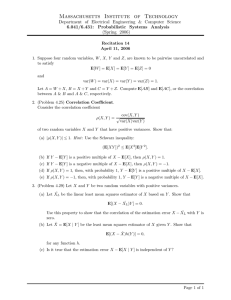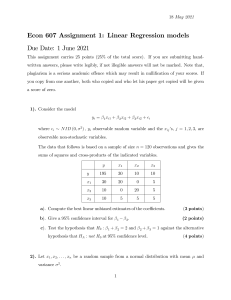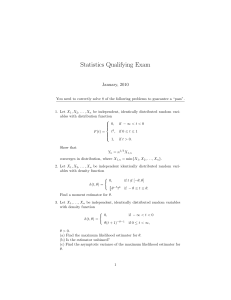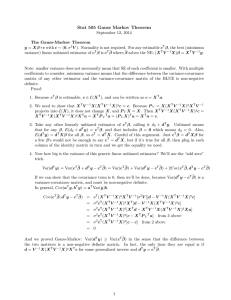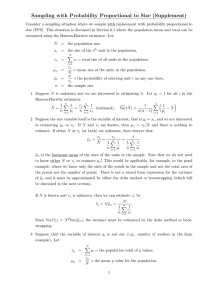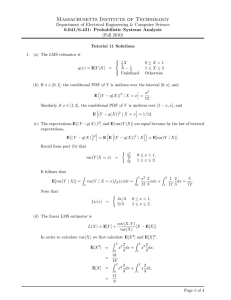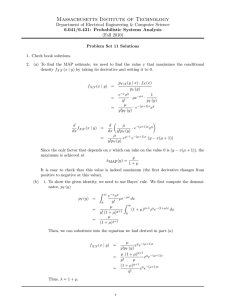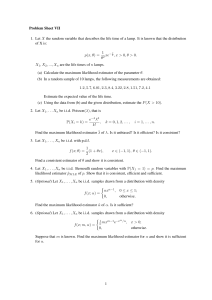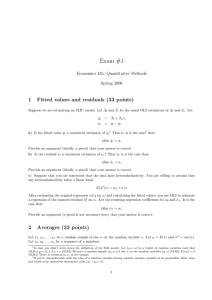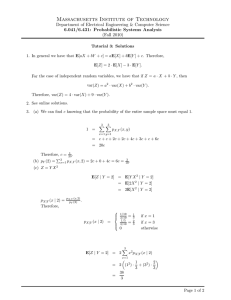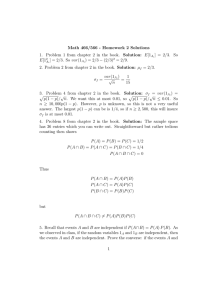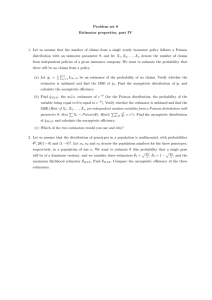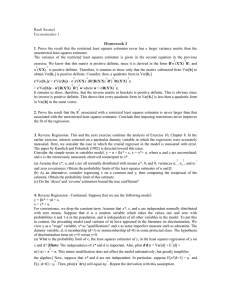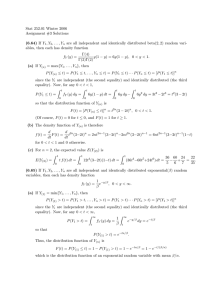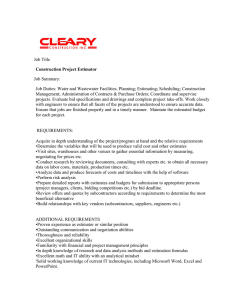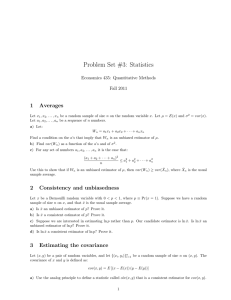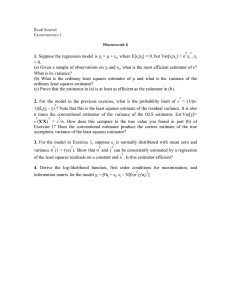Massachusetts Institute of Technology
advertisement
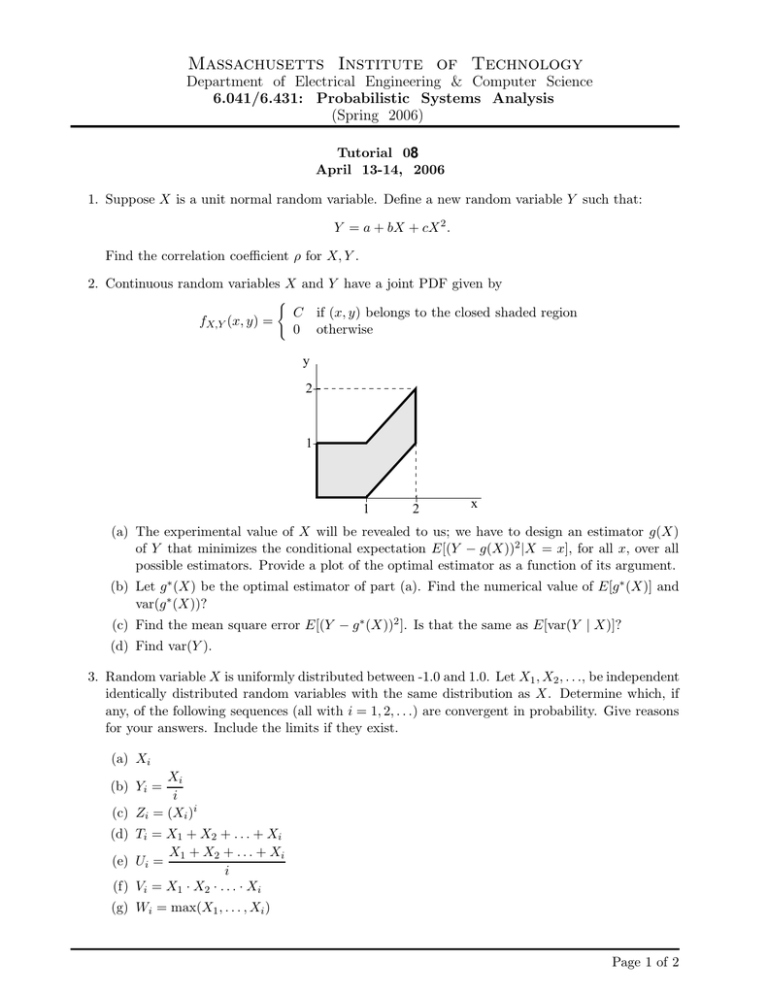
Massachusetts Institute of Technology Department of Electrical Engineering & Computer Science 6.041/6.431: Probabilistic Systems Analysis (Spring 2006) Tutorial 08 April 13-14, 2006 1. Suppose X is a unit normal random variable. Define a new random variable Y such that: Y = a + bX + cX 2 . Find the correlation coefficient ρ for X, Y . 2. Continuous random variables X and Y have a joint PDF given by fX,Y (x, y) = � C if (x, y) belongs to the closed shaded region 0 otherwise y 2 1 1 2 x (a) The experimental value of X will be revealed to us; we have to design an estimator g(X) of Y that minimizes the conditional expectation E[(Y − g(X))2 |X = x], for all x, over all possible estimators. Provide a plot of the optimal estimator as a function of its argument. (b) Let g∗ (X) be the optimal estimator of part (a). Find the numerical value of E[g∗ (X)] and var(g∗ (X))? (c) Find the mean square error E[(Y − g∗ (X))2 ]. Is that the same as E[var(Y | X)]? (d) Find var(Y ). 3. Random variable X is uniformly distributed between -1.0 and 1.0. Let X1 , X2 , . . ., be independent identically distributed random variables with the same distribution as X. Determine which, if any, of the following sequences (all with i = 1, 2, . . .) are convergent in probability. Give reasons for your answers. Include the limits if they exist. (a) Xi Xi i (c) Zi = (Xi )i (b) Yi = (d) Ti = X1 + X2 + . . . + Xi X1 + X2 + . . . + Xi (e) Ui = i (f) Vi = X1 · X2 · . . . · Xi (g) Wi = max(X1 , . . . , Xi ) Page 1 of 2

